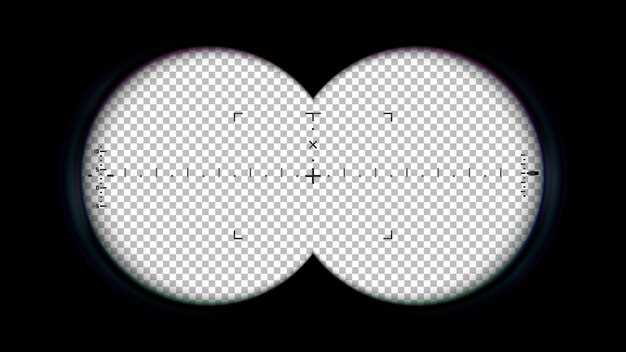
Understanding scope magnification and reticles

In the world of precision shooting and hunting, magnification plays a critical role in enhancing the shooter’s ability to accurately identify and target objects at varying distances. Different types of scopes offer varying levels of magnification, which can significantly influence both performance and the overall shooting experience. Whether you’re a seasoned marksman or a novice enthusiast, understanding how magnification works can dramatically improve your shooting effectiveness.
Equally important to magnification is the choice of reticle, the crosshairs or aiming point within the scope. Reticles come in a multitude of designs, each tailored to specific shooting conditions and preferences. Some reticles are optimized for quick target acquisition, while others provide intricate details necessary for precise long-range shooting. This article will explore the relationship between magnification levels and various reticle types, helping you make informed decisions when selecting your optical equipment.
By delving into the nuances of magnification and reticle designs, we can enhance our understanding of how these two elements interact to impact accuracy and functionality. Ultimately, knowing which combination of magnification and reticle suits your shooting style can mean the difference between a successful shot and a missed opportunity.
How to Choose the Right Magnification for Your Shooting Needs
Choosing the right magnification for your scope is crucial for enhancing your shooting experience. The magnification power you select will directly affect your accuracy and ability to identify targets. First, consider the type of shooting you will be engaging in. For close-range hunting or target practice, a lower magnification, such as 1-4x, enables quick target acquisition and a wider field of view.
If you are planning to shoot at moderate distances, a magnification range of 4-12x is commonly recommended. This provides sufficient detail to accurately aim at targets while still maintaining a practical field of view. For long-range shooting, higher magnification scopes, typically ranging from 12x and above, allow for precision targeting at significant distances.
Another aspect to consider is the type of reticle used in the scope. Different reticle designs can aid in shooting performance at varying distances. A simple crosshair might be ideal for short-range shots, while more complex reticle types, such as MIL-Dot or BDC (Bullet Drop Compensator), can assist with drop adjustments at higher magnifications.
Additionally, consider environmental factors and personal comfort. Higher magnifications can make it challenging to track fast-moving targets or maintain a stable image in windy conditions. Test different scopes to find the right balance that feels intuitive and gives you the confidence to hit your mark.
Ultimately, the best approach is to match the magnification to your specific shooting needs and style. Whether you prioritize versatility, precision, or rapid target acquisition, understanding the various types of magnification and how they align with your shooting objectives will enhance your overall performance.
Comparing Popular Reticle Designs for Different Shooting Scenarios

Different shooting scenarios demand specific reticle designs to enhance accuracy and efficiency. Understanding how these reticles function at various magnifications is essential for any shooter.
1. Duplex Reticle: This is one of the most common reticle designs, featuring thick outer lines that taper to a finer center point. It provides a clear sight picture, making it ideal for general hunting and target shooting at moderate ranges. The simplicity of the duplex design allows for quick target acquisition, especially when using lower magnification scopes.
2. Mil-Dot Reticle: Incorporating dots along the crosshairs, this reticle is particularly useful for estimating distance and making range adjustments. Shooters can use the dots to measure the size of known objects and gauge their distance. This design excels in long-range shooting scenarios where precise targeting is crucial, especially in higher magnification scopes.
3. BDC (Bullet Drop Compensating) Reticle: This design includes markings for bullet drop at various distances, allowing shooters to make quick elevation adjustments without extensive calculations. BDC reticles are favored in long-range shooting contests and varmint hunting, where engagement distances vary dramatically. They perform best at higher magnifications, allowing for detailed adjustments.
4. Mil-Reticle: Similar to the Mil-Dot, this reticle offers a grid-like pattern to aid in range estimation and adjustments. It’s particularly advantageous for tactical shooting and competitive environments where precise measurements are required. The Mil-Reticle enables quick corrections and efficient follow-up shots, especially under increased magnification.
5. Illuminated Reticle: Providing enhanced visibility in low-light conditions, illuminated reticles can be found in various designs, including duplex and BDC. The illumination feature is crucial for hunters who operate in dawn or dusk environments. Such reticles work well across a range of magnifications, but are particularly beneficial at higher settings, where the reticle can be obscured by varying backgrounds.
Choosing the right reticle design depends on the specific shooting scenario. Each type offers unique advantages that cater to different needs, be it quick target acquisition or precise long-range shooting. Understanding these nuances allows shooters to select an appropriate scope and reticle combination, ensuring effectiveness in the field.
Adjusting Your Scope Settings for Optimal Performance in Varying Conditions

When using a scope, understanding how to adjust its settings is crucial for enhanced performance across different environments. One significant factor influencing your adjustments is the type of reticle used in your scope. Reticles can vary greatly, from simple crosshairs to more complex illuminated designs, each requiring specific considerations when setting up.
In bright conditions, glare and light intensity can impact visibility. If your scope features an illuminated reticle, adjusting its brightness can improve your aiming precision. Conversely, in low-light situations, increasing the reticle’s brightness can help maintain clarity without washing out your target. Always ensure that your settings align with the ambient light to achieve optimal performance.
Additionally, the magnification settings on your scope should be tailored to the distance and type of target. For longer ranges, increasing magnification can enhance detail, allowing for better accuracy. However, at closer ranges, a lower magnification may provide a wider field of view, facilitating quicker target acquisition. Familiarize yourself with how different magnification levels affect your reticle’s visibility and clarity to adapt effectively.
Environmental factors such as weather conditions must also be considered. In windy conditions, adjusting your scope’s parallax settings can help maintain accuracy, ensuring that the point of aim remains consistent. Keep in mind that different reticle types may handle these adjustments differently, so practice using your specific scope to understand its behavior in various circumstances.
Ultimately, regularly reviewing and adjusting your scope settings in response to the conditions will significantly improve your shooting experience and accuracy. Tailoring the reticle brightness and magnification level according to the environment can make all the difference in achieving optimal performance.




